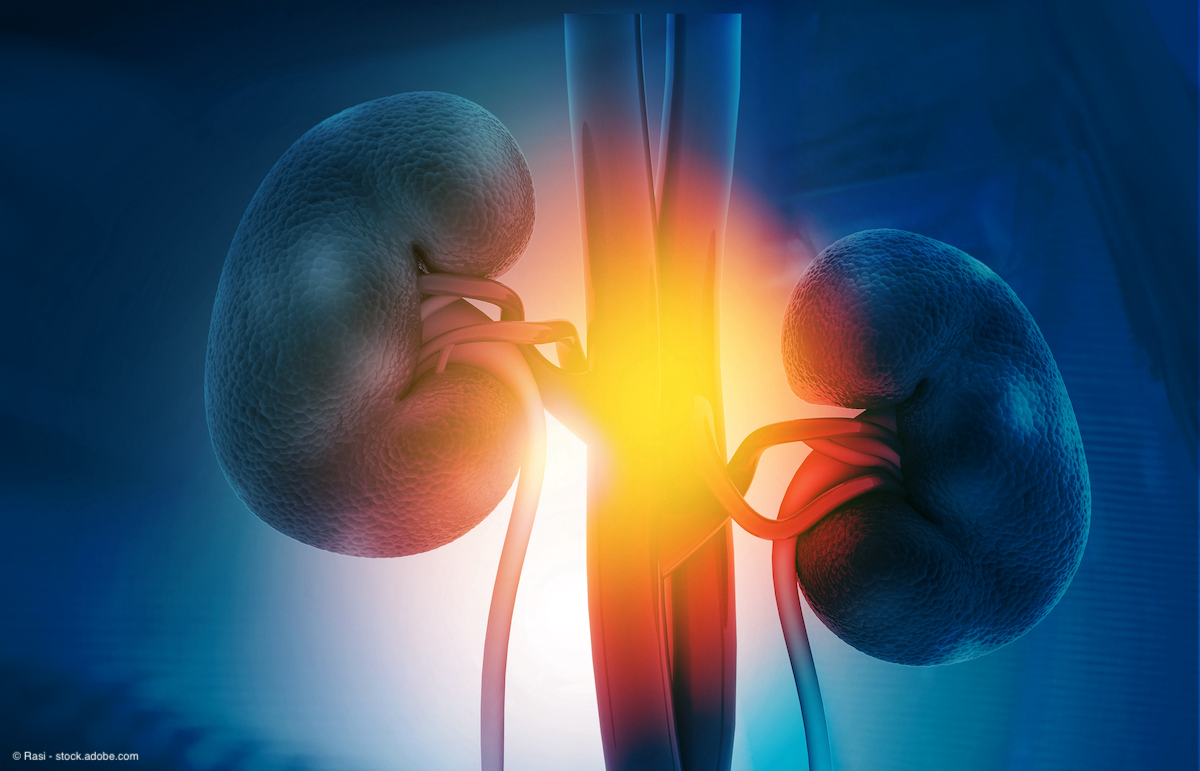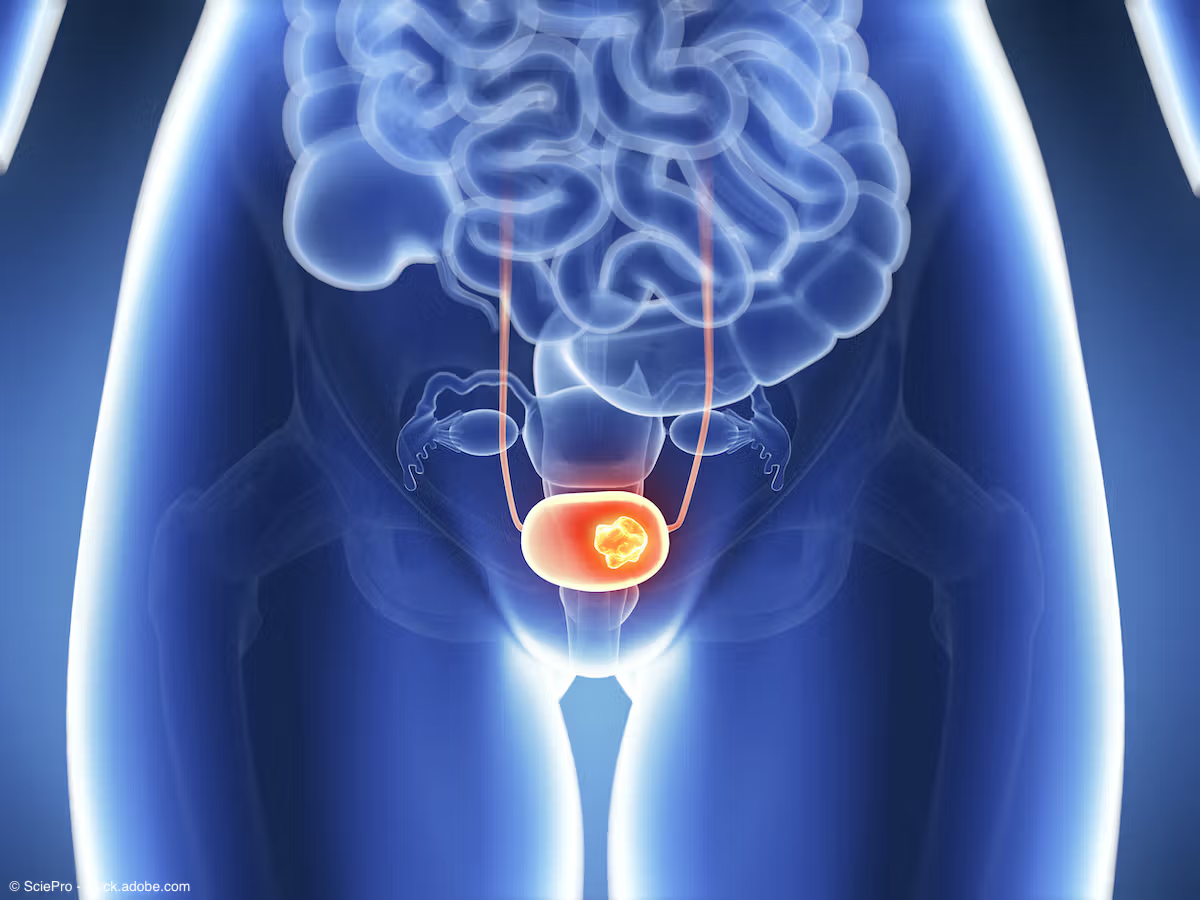Feature
Article
Urology Times Journal
Bladder preservation in localized, muscle-invasive bladder cancer: Current state of affairs
Author(s):
“In the highly selected patient with localized MIBC, an organ-preserving approach to treatment may produce similar oncologic outcomes to radical surgery with a potential for improved QoL, although there is currently insufficient evidence to recommend bladder preservation therapy as a standard of care," the authors write.
Introduction
Daniel S. Roberson, MD

In 2024, cisplatin-based neoadjuvant chemotherapy (NAC) followed by radical cystectomy (RC) with pelvic lymph node dissection (PLND) remains the gold standard, curative treatment for eligible patients with nonmetastatic muscle-invasive bladder cancer (MIBC).1 The risks of mortality, morbidity, and quality of life (QOL) degradation stemming from bladder removal cannot be overstated. Thus, a critical unmet need exists for effective MIBC treatments that avoid radical surgery while preserving oncologic outcomes.
Leilei Xia, MD

Historically, individuals who elect bladder-preserving treatment for MIBC fall into 1 of 2 groups: those medically unfit for major surgery or those with a strong preference to avoid RC. The concept of bladder-preserving therapy (BPT) in localized MIBC is not new. Various protocols have been employed and studied in this population for over 25 years.2 In all comers with nonmetastatic MIBC, oncologic outcomes of organ-preserving treatments remain inferior to those of radical surgery but seem to approach noninferiority in particular populations. Current evidence suggests that QOL may be superior with BPT in all comers, but this does not hold in all subgroups of patients with MIBC. More effective systemic therapies, further individualized treatment, and improved staging and surveillance may allow more patients with MIBC to receive effective, durable treatment while retaining their bladder.
Patient selection
Trinity J. Bivalacqua, MD, PhD

Regarding patient selection for bladder preservation in MIBC, the literature supports specific disease- and patient-level factors that lead to superior outcomes. Patients with normal or near-normal performance status and bladder function are better candidates for BPT. Disease-specific factors contributing to improved outcomes include clinical T2 disease, small and solitary tumors that are amenable to complete transurethral resection (TUR), and disease that does not result in hydroureteronephrosis and is not associated with carcinoma in situ or regional lymph node spread.3
Treatment selection
To achieve optimal outcomes in organ-preserving MIBC treatment, the components of a therapy regimen are as crucial as patient selection. The modalities in a clinician’s arsenal include systemic therapy, radiation, and surgery in the form of TUR or partial cystectomy with PLND. The strongest evidence exists for multimodal therapy in the form of either trimodal therapy (TMT), consisting of maximal TUR, chemotherapy, and chemoradiation, or maximal TUR and chemotherapy followed by local consolidation with partial cystectomy and PLND.4-6 Utilization of a single modality in organ-preserving treatment is not recommended by contemporary evidence-based guidelines nor considered standard of care.1 When utilizing radiation therapy as part of a BPT regimen, concurrently administered sensitizing chemotherapy has demonstrated superior outcomes to radiation alone.7
The evidence appraising the effectiveness of bladder-preserving MIBC treatments is not significant. The only randomized controlled trial (RCT) comparing TMT against RC in this population was published in 1991, and although it demonstrated similar overall survival (OS) in both arms, there was increased locoregional failure in the organ preservation arm; more importantly, the results were highly confounded, and the validity of the findings has consistently been called into question.2 Subsequent efforts to perform RCTs have been unsuccessful, the most recent being the failure to accrue in the phase 3 SPARE trial (NCT00867347).8 We thus rely on nonrandomized prospective and retrospective case series to draw conclusions. Meta-analyses of such series quote BPT 5-year OS at around 55% and disease-
specific survival (DSS) at around 70%, which does approach that of RC, but only in a small, select subset of nonmetastatic patients with MIBC.9,10
Several other prospective and retrospective studies employing chemotherapy and partial cystectomy after maximal TUR support a similar theme: Oncologic outcomes in BPT approach that of radical surgery only in the highly selected patient. One prospective study out of Japan demonstrated excellent 5-year outcomes (93% DSS, 91% OS) with “tetramodal therapy,” which included maximal transurethral resection of bladder tumor, induction chemoradiation, and consolidative partial cystectomy with PLND. “Tetramodal therapy” touts the best oncologic outcomes to date in this space, although this study had incredibly stringent inclusion criteria and comprised a few patients.11
Regardless of the organ-preserving regimen, patients must be closely monitored with cystoscopy, cross-sectional imaging, and urine cytology.1 If MIBC recurs, which happens in an estimated 30% of cases,12 patients should proceed to RC if medically fit.1 If patients recur with superficial bladder cancer (non–muscle-invasive bladder cancer [NMIBC]), they may be treated as if they developed de novo NMIBC, although even recurrence with NMIBC confers inferior outcomes in this population.13 Published surveillance protocols recommend beginning with endoscopic examinations every 3 months and cross-sectional, contrast-enhanced imaging every 6 months, although no one surveillance protocol has demonstrated a superior survival benefit over another.14,15
Future directions
As the field of bladder cancer evolves, the future of organ-preserving treatment in MIBC likely will be shaped by individualization of diagnostics and care, improved clinical staging and risk stratification, novel predictive biomarkers, and more effective and tailored systemic therapies. The bladder MRI is hypothesized to stage patients more accurately than conventional CT scans. Standardization efforts in the form of the Vesical Imaging-Reporting and Data System (VI-RADS), similar to what has been developed in prostate cancer, are a significant focus of ongoing research efforts.16 VI-RADS scoring has shown some promise in clinical applications in patients with localized MIBC electing BPT.17 A recent multi-institutional, phase 2 study, HCRN GU16-257 (NCT03558087), investigated the addition of immunotherapy (nivolumab [Opdivo]) to a cisplatin-based NAC regimen, provided an individualized risk-adapted approach by using VI-RADS scoring, and explored the ability to surveil patients with novel biomarkers including whole exosome sequencing of tissue and circulating tumor DNA from urine and plasma specimens.18
Another contemporary phase 2 trial, the RETAIN study (NCT02710734), took an individualized, risk-adapted approach to this clinical problem by offering BPT to patients who demonstrated specific molecular profiles on pre-NAC TUR specimens and demonstrated no evidence of disease following systemic therapy. The 2-year metastasis-free survival in RETAIN was 72%, and 50% of active surveillance patients were able to avoid RC at 41 months; however, the study did not meet its prespecified noninferiority conditions.19
In the highly selected patient with localized MIBC, an organ-preserving approach to treatment may produce similar oncologic outcomes to radical surgery with a potential for improved QOL, although there is insufficient evidence to recommend bladder preservation therapy as a standard of care. No individual bladder preservation therapy or surveillance protocol has demonstrated superiority. The future in this space likely will include enhanced diagnostics and therapies to individualize care.
REFERENCES
1. Chang SS, Bochner BH, Chou R, et al. Treatment of non-metastatic muscle-invasive bladder cancer: AUA/ASCO/ASTRO/SUO guideline. J Urol. 2017;198(3):552-559. doi:10.1016/j.juro.2017.04.086
2. Sell A, Jakobsen A, Nerstrøm B, Sørensen BL, Steven K, Barlebo H. Treatment of advanced bladder cancer category T2 T3 and T4a: a randomized multicenter study of preoperative irradiation and cystectomy versus radical irradiation and early salvage cystectomy for residual tumor. DAVECA protocol 8201. Danish Vesical Cancer Group. Scand J Urol Nephrol Suppl. 1991;138:193-201.
3. Spiess PE, Agarwal N, Bangs R, et al. Bladder cancer, version 5.2017, NCCN Clinical Practice Guidelines in Oncology. J Natl Compr Canc Netw. 2017;15(10):1240-1267. doi:10.6004/jnccn.2017.0156
4. Kaufman DS, Winter KA, Shipley WU, et al. The initial results in muscle-invading bladder cancer of RTOG 95-06: phase I/II trial of transurethral surgery plus radiation therapy with concurrent cisplatin and 5-fluorouracil followed by selective bladder preservation or cystectomy depending on the initial response. Oncologist. 2000;5(6):471-476. doi:10.1634/theoncologist.5-6-471
5. Hagan MP, Winter KA, Kaufman DS, et al. RTOG 97-06: initial report of a phase I-II trial of selective bladder conservation using TURBT, twice-daily accelerated irradiation sensitized with cisplatin, and adjuvant MCV combination chemotherapy. Int J Radiat Oncol Biol Phys. 2003;57(3):665-672. doi:10.1016/s0360-3016(03)00718-1
6. Kaufman DS, Winter KA, Shipley WU, et al. Phase I-II RTOG study (99-06) of patients with muscle-invasive bladder cancer undergoing transurethral surgery, paclitaxel, cisplatin, and twice-daily radiotherapy followed by selective bladder preservation or radical cystectomy and adjuvant chemotherapy. Urology. 2009;73(4):833-837. doi:10.1016/j.urology.2008.09.036
7. James ND, Hussain SA, Hall E, et al. Radiotherapy with or without chemotherapy in muscle-invasive bladder cancer. N Engl J Med. 2012;366(16):1477-1488. doi:10.1056/NEJMoa1106106
8. Huddart RA, Hall E, Lewis R, Birtle A; SPARE Trial Management Group. Life and death of SPARE (Selective bladder Preservation Against Radical Excision): reflections on why the SPARE trial closed. BJU Int. 2010;106(6):753-755. doi:10.1111/j.1464-410X.2010.09537.x
9. Mitin T, George A, Zietman AL, et al. Long-term outcomes among patients who achieve complete or near-complete responses after the induction phase of bladder-preserving combined-modality therapy for muscle-invasive bladder cancer: a pooled analysis of NRG Oncology/RTOG 9906 and 0233. Int J Radiat Oncol Biol Phys. 2016;94(1):67-74. doi:10.1016/j.ijrobp.2015.09.030
10. Arcangeli G, Arcangeli S, Strigari L. A systematic review and meta-analysis of clinical trials of bladder-sparing trimodality treatment for muscle-invasive bladder cancer (MIBC). Crit Rev Oncol Hematol. 2015;94(1):105-115. doi:10.1016/j.critrevonc.2014.11.007
11. Kijima T, Tanaka H, Koga F, et al. Selective tetramodal bladder-preservation therapy, incorporating induction chemoradiotherapy and consolidative partial cystectomy with pelvic lymph node dissection for muscle-invasive bladder cancer: oncological and functional outcomes of 107 patients. BJU Int. 2019;124(2):242-250. doi:10.1111/bju.14736
12. Coppin CM, Gospodarowicz MK, James K, et al. Improved local control of invasive bladder cancer by concurrent cisplatin and preoperative or definitive radiation. The National Cancer Institute of Canada Clinical Trials Group. J Clin Oncol. 1996;14(11):2901-2907. doi:10.1200/JCO.1996.14.11.2901
13. Zietman AL, Grocela J, Zehr E, et al. Selective bladder conservation using transurethral resection, chemotherapy, and radiation: management and consequences of Ta, T1, and Tis recurrence within the retained bladder. Urology. 2001;58(3):380-385. doi:10.1016/s0090-4295(01)01219-5
14. Mak RH, Hunt D, Shipley WU, et al. Long-term outcomes in patients with muscle-invasive bladder cancer after selective bladder-preserving combined-modality therapy: a pooled analysis of Radiation Therapy Oncology Group protocols 8802, 8903, 9506, 9706, 9906, and 0233. J Clin Oncol. 2014;32(34):3801-3809. doi:10.1200/JCO.2014.57.5548
15. Efstathiou JA, Spiegel DY, Shipley WU, et al. Long-term outcomes of selective bladder preservation by combined-modality therapy for invasive bladder cancer: the MGH experience. Eur Urol. 2012;61(4):705-711. doi:10.1016/j.eururo.2011.11.010
16. Panebianco V, Briganti A, Boellaard TN, et al. Clinical application of bladder MRI and the Vesical Imaging-Reporting and Data System. Nat Rev Urol. 2024;21(4):243-251. doi:10.1038/s41585-023-00830-2
17. Kimura K, Yoshida S, Tsuchiya J, et al. Novel utility of Vesical Imaging-Reporting and Data System in multimodal treatment for muscle-invasive bladder cancer. Eur Radiol. 2023;33(9):6245-6255. doi:10.1007/s00330-023-09627-8
18. Galsky MD, Daneshmand S, Izadmehr S, et al. Gemcitabine and cisplatin plus nivolumab as organ-sparing treatment for muscle-invasive bladder cancer: a phase 2 trial. Nat Med. 2023;29(11):2825-2834. doi:10.1038/s41591-023-02568-1
19. Geynisman DM, Abbosh P, Ross EA, et al. A phase II trial of risk-enabled therapy after initiating neoadjuvant chemotherapy for bladder cancer (RETAIN BLADDER): interim analysis. J Clin Oncol. 2021;39(suppl 6):397. doi:10.1200/JCO.2021.39.6_suppl.397





























